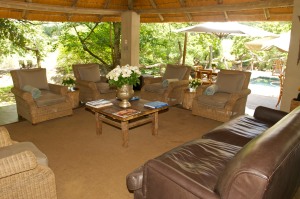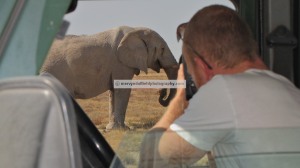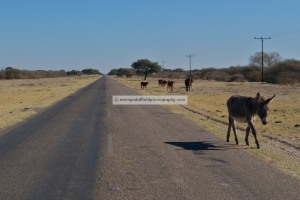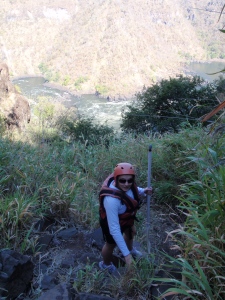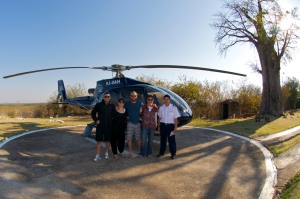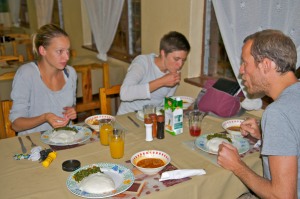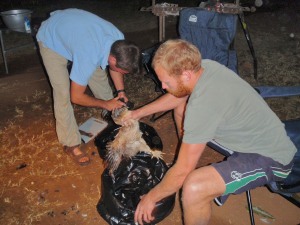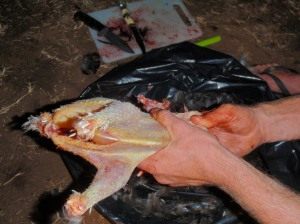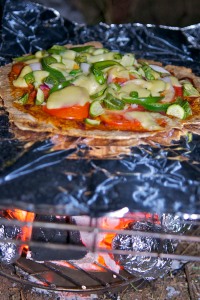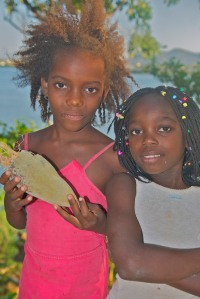Day 10 Epupa Falls to Ongongo
The Chief had to go to the Clinic 200km away. The day before, while having lunch I offered to take him as I was headed in the general direction.
0700
I picked up the Chief and one of his young sons.
After dropping them near Opuwu, I continued South to the graves of the Dorsland Trekkers. At the time I did not know much about these trekkers but after doing some research, find it fascinating that they were able to travel the distances they did given the conditions and areas they were in.
Near Kaoko Otavi lay five graves of the Dorsland trekkers under the tree.


This is the remains of the church. I met with J. Humu a local who took me to the sites and he believes the church collapsed and the five bodies were carried a few hundred meters and buried under the tree you see above. The date he wrote in the sand was 1924. The only information I have found was the Dorsland Trekkers erected the church around 1879. This was a chosen spot as there is a spring that runs through this village.
The roads are all gravel but as you can see are kept in a fairly good condition.


Right: Continuing South to Sesfontein, one thing you cannot stop is all the dust settling in your car. Everywhere!
Very steep pass 40km North of Sesfontein

Arriving at Sesfontein, welcomed by a Trip of Goats. This is a very scenic area with Sesfontein set to the West of this mountain range. I would like to have the names of the mountain ranges, but they are not easily found. I am told that many are just not named.


Just before sunset I tucked into Ongongo to camp for the night. Ongongo is known for the clear pond you see. The water is a great temperature even in winter as a warm flowing waterfall set back in the cave feeds the pond. A swim before setting up camp was great after a long day on the gravel roads.

Distance Traveled: 408km
Day 11 – Ongongo to Twyfelfontein
The drive South you are kept entertained with Giraffe, Zebra and many Springbok.

Springbok among Milk Bush

Looking down on into the plains to the East
Petrified Forest
Proclaimed a national Monument on March 1st, 1950.
The petrified forest is a 65Ha area in the Damaraland where you can see the exposed fossilized trees. In short, these tree trucks were washed down a river and buried in alluvial sands some 200 million years ago. Due to a lack of air and pressure these trees are now said to have “turned to stone”.
Reference: http://www.namibian.org/travel/natural/petrified-forest.html


Left: Rings are clearly visible Right: Water that has crystalized with in the trunk


Left: Although hard as stone, the bark can be seen. Right: 40m trunk
The Welwitschia mirabilis
Said to be a living fossil, can only be found in the Namibia and Angola. The oldest and largest plant stands approximately 1.4m tall, 5m in diameter and in excess of 1500 years old.
Only 2 leaves, but separate into more through wind damage.

Male Welwitschia/Khorixas plant around 600 years old.

On to Twyfelfontein – home to the engravings and rock paintings
Namibia’s first World Heritage Site 28 June, 2007

Engravings of animals


Animals and rock paintings
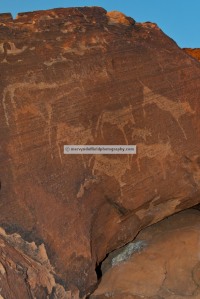

Rock forms and Ruins



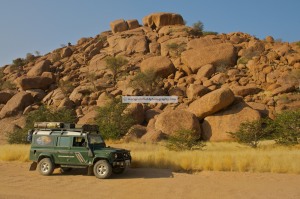
I camped along the dry Aba-Huab riverbed for the night

Distance: 305km
Day 12 – Twyfelfontein to The White Lady
There was plenty to see on my way South to The Brandberg Mountains.
Organ Pipes right before sunrise


Burnt Mountain at sunrise

Gardens of Pillar rocks were fascinating

I did not take the recommended route, but instead took a more direct route with notation “Serious 4wd needed”. It was a slow going road, averaging 20-40km/h for 80km. With stops to take pictures and negotiate tracks, it took around 6 hours.
Deserted houses and cars on route


40km from the nearest village and there is a honesty system of “take a rock and leave a penny”

Bush road signs

The “veld” out here is fine and light in color. The blades are almost gold in color. I love it.


60km into the trip, the highest mountain in Namibia revealed her North side. Brandberg Mountain


From the cockpit

The White
The story of the White Lady of the Brandberg Mountains has great history and is worth looking up. Unfortunately it is far to long for me to add into the blog.
It’s a 2.5km Walk up to the paintings. The walk itself is along a riverbed, crossing streams, and between the boulders. The walk on its own is worth the trip.

Left: The White Lady Right: Half Man-Half Animal


Animals and White Lady

Oldest pictures on Maack rock

Maack shelter overhang


I spent the night at the White Lady Lodge 15km away from the painting. If you recall our UK friends from previous blogs Jon, Claire, and their daughters Sophie and Lucy, as well as Steve and Samantha were also spending the night at the lodge. It was good to catch up with them again and see where their travels had taken them.
Distance: 117km
Day 13 White Lady to Swakopmund
The morning was spent saying goodbye to friends. Left to Right: Sam, Steve, Myself, Lucy and Sophie on the roof, Jon and Claire.

Headed West toward Henties Bay from Uis
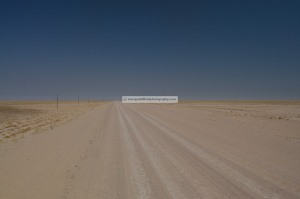
Honesty sales system. Take a rock and leave a penny. Headed North from Henties Bay toward Cape Cross.

Cape Cross
Seal colony



Barking Cape Fur Seal

Padrao left by Diogo Cao in 1486. He named this area Cabo de Cruz or Cape Cross



West coast far different form the East

Fishing Trawler Zeila, stranded in the early hours of the morning on August 25, 2008. The Vessel was on tow from Walvis Bay to Bombay after being sold for scrap. The wreck is between Henties Bay and Swakopmund. Picture taken in the fog.

Coastline near wreck

The sleepy village of Wlotzkasbaken. With 106 homes and only 6 permanent residence, this village is truly unique. No water, electric or sewage is town supplied. Water is delivered and stored in private water reservoirs seen below.

Colorful holiday homes with matching water reservoirs




Night spent in Swakopmund
Distance: 368km
Day 14 Swakopmund to Walvis Baai
Off to the dunes with Da African Style Sand boarding company in Swakopmund. Run by Michelle and Raymond, and guided by Bambo and Nico. This is a very well run company and great fun for all ages.

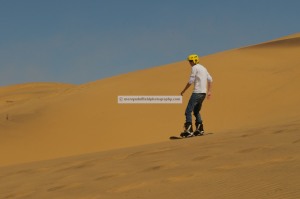


The flat board, “Lay down Board”, was possible more fun than the sand boarding. The lower left picture shows the height of the dune for the lay down board enabling speeds of up to 80km/h.



Walvis Bay
Pelican showing off along the waterfront

Port of Walvis Bay

Bay view sunset
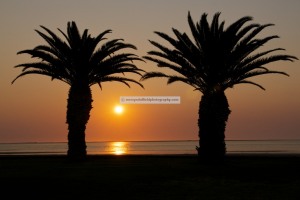
As Walvis Bay doesn’t cater for campers or over landers, I stayed at Loubsers B&B / Backpackers in Walvis Bay for the night.
Distance: 54km
Day 15 Walvis bay to Sesriem
Started the morning with a drive to Pelican Point along the Salt Pans


Namib Salt works


The golden bladed grass again

The drive South to Sesriem was filled with ostrich, Gemsbok and Springbok along side the road.
Bridge over river at Kuiseb Pass

The tropic of Capricorn in the West, Namibia
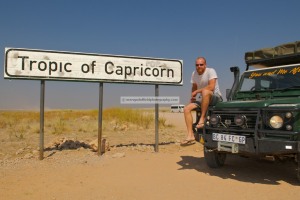
Flash back 21 May 2011 Suz and I on the Tropic of Capricorn, East Coast, Mozambique



Solitaire is a great stop for fuel, coffee and fresh bakery from Moose MacGregors Desert Bakery.
Sesriem
Named by the Dorsland trekkers as “Six Rawhide String”, as that was the death of the canyon. They tied six strings together and lowered their bucket to get water.
Arrival at the park gate, booked a campsite and straight to the dunes. Sossosvlei and Deadvlei are 60km from the Sesriem. The only problem is that you have to be out of the par by 1820, which is one hour after sunset. The common route is Deadvlei then Dune 45 for sunset as Dune 45 is only 45 km from the gate.
I however wanted to photograph Deadvlei at sunset, which left getting back to the gate by 1820 tricky.
This was one of the highlights of my trip. Ever since seeing pictures of Deadvlei, I have been wanting to come here.
Dunes on the way to Deadvlei & Sossosvlei


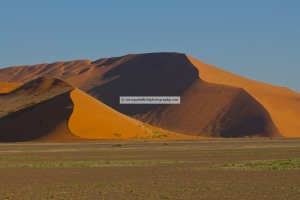
Deadvlei is a 1.1km walk across the Dunes from the car park

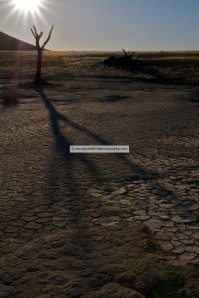

This is why I wanted to be there for sunset. The images of the cracked ground highlighted with the low level sun are stunning.


Dune 45 in the background after sunset

Distance: 522km
Day 16 – Sesriem to Betta
The morning start with a run down to Sesriem Canyon. Once again the usual route is to line up outside the park gate by 0515. Most people want to get up Dune 45 for sunrise, this meant I had the Canyon to myself which is great for photos.


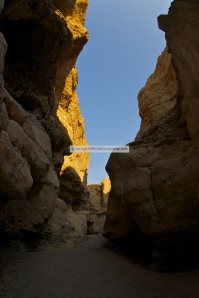


Tire repairs before heading off again

Careful not to drive over the reptiles in the road!

Sociable Weaver nest. One of the most impressive structures seen along the roads, particularly in the Southern Parts of Namibia.



Entrances to the chambers are from below. These nests house up to one hundred pairs of birds at a time. Some are seen on the ground possibly when the nest gets too large and heavy for the structure it is on.
On returning to the car from photographing this nest, I saw a leave in my main fuel tank. Although small, I decided to repair it before continuing.
18km down the road I found a Farm with a rest stop called Betta.I removed the tank, and found a pin hole leak. The hole was too small to see with the naked eye, only once pressuring the tank with air, and drizzling a soapy water solution on the – much like finding a puncture.
Welding a plate over the pinholes


I camped there for the night.
Distance: 164km
Day 17 Betta to Keetmanshoop
Departed Betta for Luderitz in the South West.
200km away I stopped in the town of Aus, which is known for the wild desert horses. This is home to the Bahnhof Hotel, which makes the best take away coffee!


Aus Church

The road to Luderitz form Aus is 123km, and protty much a straight open road.
Deserted building

Light house and view of the Port of Luderitz from Shark island


Ships at anchor waiting for Port Clearance

Luderitz has a great little waterfront with bars, restaurants and a few shops overlooking the port.

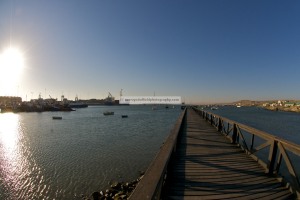
Kolmanskuppe is the Ghost town in the diamond mining area, 10km from Luderitz. The town was deserted after WW1 and since been taken over by the sand dunes. Tours of the town are available once obtaining a permit.




From Luderitz, I drove East to head for South Africa. This concluded my journey through Namibia
A lasting memory of Namibia. The sun setting below the Dunes of Luderitz in my rearview mirror while a full moon rose up ahead.

I stopped over in Keetmanshoop for the night and continued on through the Ariamsvlei/Nakop border post the following morning.
Total Distance: 7130km
Days SA to SA: 18
My Top 5 Highlights
1: Epupa Falls
2: Himba visit
3: Deadvlei and Dunes
4: Etosha National Park
5: Sand boarding, Swakopmund
For more pictures please visit www.mervynduffieldphotography.com
Follow the icons to Travel, Africa, Namibia






